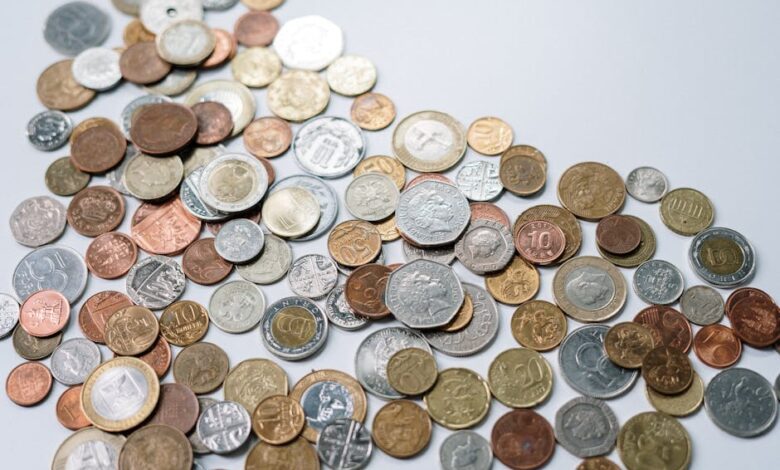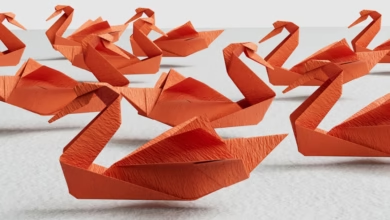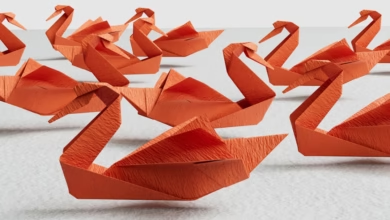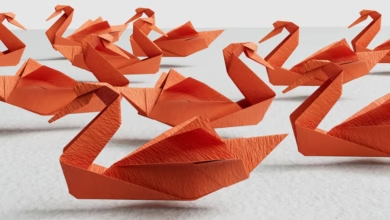Metals in Motion: Exploring the Interconnected Roles of Silver, Copper, and Rare Earths in Today’s Economy

In an increasingly interconnected global economy, the dynamics of metal markets offer valuable insights into broader economic trends and investment strategies. This article delves into the multifaceted roles of various metals, starting with silver, which holds a unique position straddling both industrial applications and investment allure. We explore how copper prices serve as a barometer for economic health, reflecting shifts in demand and production across sectors. Additionally, we examine the rising importance of rare earth metals, propelled by the green energy revolution, and the ongoing debate between platinum and palladium as investment vehicles.
The discussion will also highlight the critical role metals play in diversifying investment portfolios, the impact of inflation on their prices, and the future of aluminum within a sustainable economy. Finally, the influence of mining regulations on metal prices will be assessed, providing a comprehensive overview of the factors shaping today's metal markets. Join us as we navigate this intricate landscape, uncovering the interplay between industrial demand, investment potential, and regulatory challenges that define the world of metals.
- 1. **Navigating the Dual Landscape: Silver's Industrial and Investment Significance**
- 2. **Copper as an Economic Barometer: Understanding Price Fluctuations and Global Trends**
1. **Navigating the Dual Landscape: Silver's Industrial and Investment Significance**
Silver holds a unique position in both the industrial and investment sectors, serving as a critical metal that bridges practical applications with financial opportunities. On the industrial side, silver is renowned for its exceptional conductivity, making it indispensable in electronics, solar panels, and various manufacturing processes. Its antimicrobial properties also contribute to its use in healthcare applications, including medical devices and coatings. As industries increasingly adopt green technologies, the demand for silver is projected to rise, particularly in photovoltaic cells used in solar energy production.
In the investment arena, silver is often viewed as a safe-haven asset, similar to gold, particularly during periods of economic uncertainty or inflation. Investors flock to silver as a hedge against currency devaluation and market volatility. The metal's comparatively lower price point than gold makes it an attractive option for a broader range of investors, fostering a vibrant retail market alongside institutional investment.
Navigating the dual landscape of silver requires an understanding of the interplay between its industrial demand and investment appeal. Fluctuations in industrial demand can significantly influence silver prices, as seen during periods of economic expansion when manufacturing activity increases. Conversely, investment demand can escalate due to geopolitical tensions or economic downturns, creating a complex dynamic.
Ultimately, silver's dual role enhances its significance in both markets, making it a vital component of industrial applications while also serving as a resilient investment choice. As global economic conditions evolve and the push for sustainable technologies intensifies, silver's importance is likely to grow, highlighting the need for investors and industry participants to stay informed about market trends and shifts.
Silver plays a multifaceted role in both industrial and investment markets, serving as a critical component in numerous applications while also being a popular asset for investors. In the industrial sector, silver's exceptional conductivity, reflectivity, and resistance to corrosion make it invaluable in electronics, solar panels, and medical devices. The growing demand for these technologies, particularly in renewable energy and healthcare, has bolstered silver's industrial consumption, accounting for approximately 50% of its total demand in recent years.
On the investment side, silver is often viewed as a hedge against inflation and economic uncertainty. Investors tend to flock to silver during times of market volatility, driven by its historical status as a store of value. Unlike gold, which is primarily a financial asset, silver has the unique advantage of being both an industrial and precious metal, allowing it to appeal to a broader range of investors. This duality can lead to price fluctuations that reflect changes in both sectors, making silver a dynamic addition to investment portfolios.
Copper prices serve as a barometer for global economic health, with their fluctuations often mirroring industrial activity and overall economic growth. As a key material in construction, electrical wiring, and manufacturing, copper demand is closely tied to economic expansion. When economies thrive, copper prices typically rise due to increased demand, while downturns can lead to significant price drops, reflecting reduced industrial activity.
The impact of green energy technologies on the demand for rare earth metals is profound, as these materials are essential for producing high-efficiency batteries, electric vehicles, and wind turbines. As the world shifts toward sustainable energy solutions, the demand for rare earth metals has surged, driving prices upward and raising concerns about supply stability. The reliance on a limited number of countries for rare earth mining adds an additional layer of complexity to this growing market.
When comparing platinum and palladium as investments, one must consider factors such as market demand, supply constraints, and price volatility. Platinum, traditionally used in jewelry and catalytic converters, has seen fluctuating demand, particularly as the automotive industry shifts toward gasoline engines that favor palladium. However, platinum's potential use in hydrogen fuel cells and its rarity can make it an attractive investment for those looking for long-term value.
Metals play a crucial role in diversifying investment portfolios, as their performance can vary significantly from traditional stocks and bonds. Precious metals like gold and silver often move inversely to equity markets, providing a hedge during economic downturns. Industrial metals, on the other hand, can offer growth potential in booming economies. A well-rounded investment strategy that includes a mix of metals can help investors mitigate risk and capitalize on market trends.
Inflation impacts the prices of precious and industrial metals through various mechanisms, including increased production costs and heightened demand for tangible assets. As inflation rises, investors often seek out metals as a safeguard against eroding purchasing power. Additionally, central banks may adjust interest rates in response to inflationary pressures, influencing the attractiveness of metals as an investment.
Aluminum's future in a sustainable economy looks promising, given its lightweight nature and recyclability. As industries aim to reduce carbon footprints, aluminum is increasingly favored for applications in transportation, packaging, and construction. Its ability to be recycled indefinitely without loss of quality positions it as a key player in the circular economy, aligning with global sustainability goals.
Finally, mining regulations significantly impact metal prices by influencing supply dynamics. Stricter environmental policies and labor laws can lead to increased production costs and reduced output. As governments worldwide prioritize sustainable practices, the compliance costs for mining operations can create fluctuations in metal prices, affecting both industrial and investment markets. Understanding these regulatory landscapes is crucial for investors looking to navigate the complexities of the metals market.
2. **Copper as an Economic Barometer: Understanding Price Fluctuations and Global Trends**
Copper, often referred to as "Dr. Copper," is widely regarded as a reliable indicator of global economic health due to its extensive use in various industries, particularly construction and manufacturing. When the economy is thriving, demand for copper typically rises as infrastructure projects and consumer goods production increase. Conversely, during economic downturns, demand tends to wane, leading to price declines.
Price fluctuations in copper are influenced by several factors, including supply chain dynamics, geopolitical tensions, and technological advancements. For instance, disruptions in major copper-producing countries, such as Chile and Peru, can lead to supply shortages, driving prices up. On the other hand, advancements in recycling technologies may increase supply from scrap sources, potentially stabilizing or reducing prices.
Global trends, such as urbanization and the push for renewable energy, also play a significant role in copper demand. The construction of smart cities and the electrification of transportation systems, including electric vehicles, require substantial amounts of copper. As countries transition towards greener economies, the projected increase in copper demand may signal an optimistic economic outlook.
Investors closely monitor copper prices as they often reflect broader economic indicators, including industrial production and consumer confidence. For example, rising copper prices may suggest an expanding economy, while falling prices could indicate a slowdown. Consequently, fluctuations in copper prices not only affect the metal market but also serve as a barometer for assessing global economic trends and investment strategies.
In conclusion, the intricate dynamics of the metals market reveal a multifaceted landscape influenced by industrial demand, investment trends, and broader economic factors. Silver, with its dual role as both a critical industrial component and a coveted investment asset, underscores the importance of understanding market nuances. Similarly, copper prices serve as a vital indicator of global economic health, reflecting shifts in demand and production levels.
The rising prominence of green energy technologies further amplifies the demand for rare earth metals, highlighting the need for sustainable resource management. In the debate of platinum versus palladium, investors must weigh factors such as market volatility, industrial applications, and long-term growth potential. Additionally, incorporating metals into investment portfolios can provide diversification, offering a hedge against inflation, which profoundly affects the prices of both precious and industrial metals.
As we look toward the future, aluminum's role in a sustainable economy becomes increasingly important, particularly as industries seek lightweight and recyclable materials. However, the impact of mining regulations cannot be overlooked, as they play a crucial role in shaping metal prices and investment strategies. Ultimately, staying informed about these interconnected elements will enable investors and industry stakeholders to navigate the evolving landscape of metal markets effectively.





